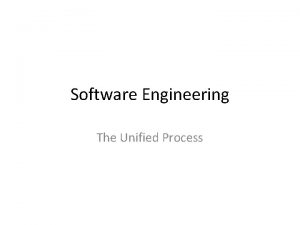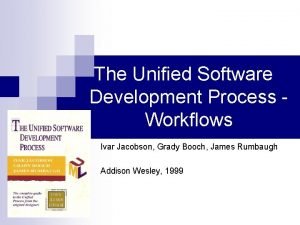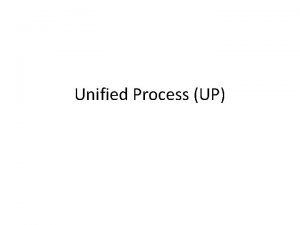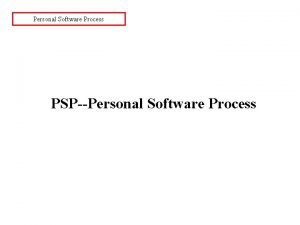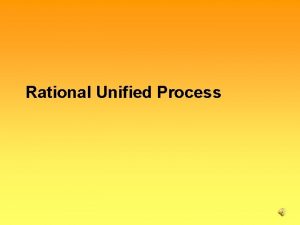Software Engineering The Unified Process Unified Process Unified







- Slides: 7

Software Engineering The Unified Process

Unified Process • Unified Process a merger of Three works on system modeling by Rumbaugh, Booch, Jacobson • Resulted in products for Rational • Rational since 2003 part of IBM • This process resulted in a modeling language to express ideas in the process • Many partners in industry now part of this process

Unified Process • In 1994 there were 50 types of modeling methods • All had various strengths and weaknesses • Unified Process combined Rumbaugh OMT, Booch’s and Jacobson’s OOSE • Rumbaugh and later Jacobson Joined Booch at Rational

Unified Process • OMT was most Useful for analysis and systems with lots of data • Booch’s was useful during detail design and implementation • OOSE strengths were in the area of use cases as a tools to drive the system. Drove requirements, analysis and high level design • These were the strengths but methods did some other things

Unified Process • Why Unified 1. Methods were evolving towards each others 2. Stability in Object Oriented Marketplace to settle on one method that is mature for an organization 3. Collaboration yields improvements “whole greater than the sum of its parts”

Unified Process • Goals – To Model Systems from concept to execution – Address issues of scale inherent in complex systems – Create a modeling language that both people and machines can understand

• • Unified Process Importance of Modeling Principles of Modeling Blueprints of system Object Oriented Modeling
